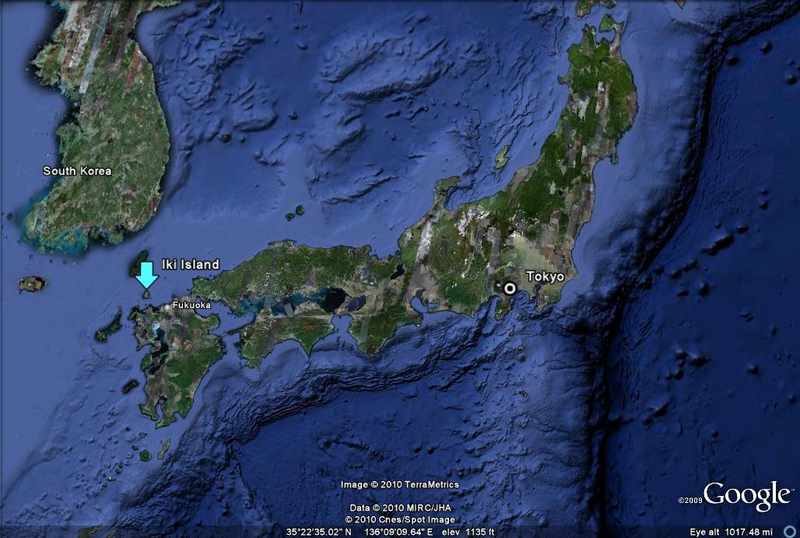Iki island, although for historical reasons part of Nagasaki Prefecture, is actually much nearer Fukuoka and Saga Prefectures. It lies in the Genkai sea between Fukuoka City and Busan in South Korea and is part of the Iki-Tsushima quasi-National Park. It is approximately 17km north to south and 14km east to west with a population of around 33,000. The island economy is based around fishing and agriculture, and much of the land is used for rice paddies.
Iki has seen its share of historical events; the island was ravaged by marauding Mongol warriors in the 13th Century, and the Genkai sea was the scene for the 1905 destruction of the Russian naval fleet which heralded Japan's entry into the modern age.

Geography
The main settlements on the island are Gonoura, Ashibe, Ishida and Katsumoto. The village of Yunomoto in the north west is the hot-spring region on the island. The tourist sites are well spread out across all areas of the island. There are several smaller inhabited islands around Iki, some of which can be visited by ferry.
Recent History
Until recently, Iki was separated into 4 separately administered towns: Gonoura, Ashibe, Katsumoto and Ishida. Due to a national government squeeze on spending in rural areas, the towns combined to form a single entity which they called Iki-shi, which in English is usually translated as Iki City. Since calling an area with as much countryside as Iki a city is as much of a misnomer as you can get, I refer to the island only as Iki, or Iki Island on this website.
